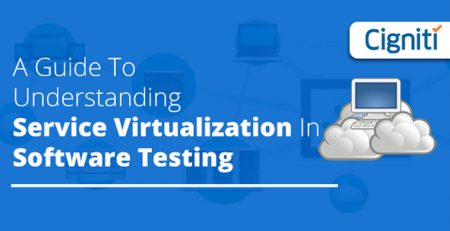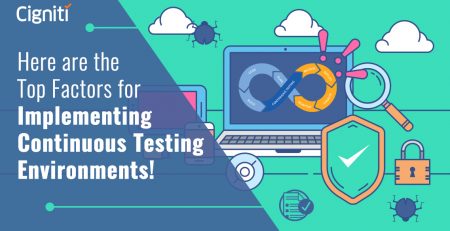5 Ways Cigniti’s BOT Model Helps Global Companies Expand Their Operations
The COVID-19 pandemic has changed how businesses in all industries and geographical areas conduct business for years. A recent McKinsey Global Survey of executives revealed that organizations had increased the digitalization of their internal processes and supply-chain interactions by three to four years. Additionally, their portfolios’ proportion of digital or digitally enabled items has increased startlingly by seven years. It takes new strategies and practices to be competitive in this changing business and economic environment.
On the other hand, there is a significant lack of competent development resources on a global scale, which results in software engineers’ pay being absurdly high in most Western and high-income countries like the US, the UK, and Canada. All sizes of businesses are increasingly swarming to the closest and most accessible offshore and nearshore software outsourcing facilities to reduce operational costs and get the best software talent.
There will be a global shortage of over 545K software developers by 2026.
– ManpowerGroup
Businesses now understand various ways to use remote information technology talent and must adopt innovative leadership strategies to integrate remote talent into their operations effectively. They seek offshore talent models that best balance cost, capability, and control because each strategy has its own work management and cost considerations.
Many are attempting to grow their technology organization by collaborating with a third party to establish a virtual captive office in India with the possibility of internal transfer. They are searching for virtual captive partners offering office space, furniture, network access, local PC support, and complete HR assistance (recruitment, payroll, benefits) because their workers and contractors are dispersed worldwide.
IT companies are being compelled by this rapidly changing ecosystem for growth to hunt for tools and strategies that will keep them competitive. The Build-Operate-Transfer (BOT) Model is one of the most often used strategies to accelerate their growth in the least amount of time.
But what is the build-operate transfer model, and how does it operate?
What is a BOT model?
According to Gartner, in a BOT model, a company engages a service provider to set up, improve, and manage a business process or information technology service delivery operation to transfer the function to the company as a captive center.
Several multinational corporations are using the BOT approach today as a risk-shifting substitute for conventional outsourcing. BOT maintains control by hiring a partner to set up, establish, transform, and transfer new service centers back to the business. It is neither internal nor typically outsourced.
The build-operate-transfer model is an integrated partnership that combines design-build purchases’ operations and maintenance duties with the design and construction responsibilities. It enables you to create an offshore crew during the “build” phase and test them out during the “operate” phase.
In the “transfer” phase, once the team has adapted to your company’s procedures, resources, and methodology, you may assume complete command of the group.
You have the option to test before you purchase with the BOT model. As a result, you shouldn’t make significant investments in your offshore unit unless you are sure of its value.
Why should you consider BOT?
Your company has considered a new or improved service delivery model. You worry that you lack the resources to set up a captive center on your own, but you still like to have more control over the situation than a full outsourcing option. Or perhaps you wish to improve your offshore operations but lack the resources.
Enter the build-operate-transfer model, a hybrid choice that enables you to gain critical business skills and the benefits of outsourcing without giving up control, time, or resources to develop independently.
A well-executed BOT model for software outsourcing has several advantages. There are still certain factors to take into account, but for the most, the benefits outweigh the disadvantages:
- Since the model appears to have a 24/7 process cycle that runs practically constantly, it aids in getting the product to market more quickly.
- An offshore organization owns, manages, and operates The project and team. Hence, the strategy helps to save up to 60% of the regular costs.
- The model may help investors diversify their investments, reducing the risk of doing business in a foreign nation.
- By delivering a more comprehensive range of services, businesses may quickly scale their operations through the model, which fills in any holes in their business model.
- Companies can ramp up or ramp down rapidly and incorporate newer technology when they have an experienced crew.
How is Cigniti’s BOT Model Helping Global Companies to Expand their Operations?
Proven expertise in successfully delivering BOT engagements
- 10+ successful BOT engagements delivered (incubated & enabled)
- 22+ years providing customized software quality and development engagements
- 200,000 SFT of office space across 4 offices
Information Security & Intellectual Property protection
- Cigniti is ISO 27001: 2013, ISO 9001:2015, ISO 13485:2016 & SOC3 certified organization
- Strict compliance through mature ISMS and IPMS frameworks
Engagement readiness through existing partnerships
- Years of partnership
- Current team can be transitioned to the BOT contract immediately
- Quicker onboarding for future resources by leveraging the existing KM framework and training modules
Organizational Process maturity ensuring predictable delivery
- Organizational maturity as evidenced through (CMMI) Level 5 SVC 2.0 accreditation and contribution towards the creation of Test Maturity Model integration (TMMi®)
- Recognized by Industry Leaders – Gartner, Everest, Forrester, Zinnov, and ISG
Access to Cigniti’s matured ecosystem
- Cigniti has a robust ecosystem of key business functions such as Human Resources, Recruitment, Learning and Development, Finance and Program Management Office for ODC Set up
Cigniti has over 200,000 sq. ft. of space at offshore Hyderabad, India to accommodate our talented resource pool. The Offshore facility is compliant with Indian Green Building Council (IGBC) and is equipped with redundant internet leased lines and redundant power supplies. The ISO 27001, GDPR, & SOC compliant facility, can run 24×7 operations to support IT development; testing, or maintenance needs and respond quickly to emergencies. The facility has dedicated cloud-enabled labs for compatibility testing, performance testing, and mobile application testing.
Cigniti’s pool of 4100+ resources spread across the globe is supported by various supporting functions such as Infrastructure, HR, Talent Acquisition, Talent Development, Process, PMO, Corporate Services/Admin to ensure all our captive centers/delivery centers and projects run as usual without affecting our efficiency, quality, and productivity.
Want to learn more about our BOT and how to begin your successful BOT journey with us? Visit: Cigniti BOT Model





Leave a Reply